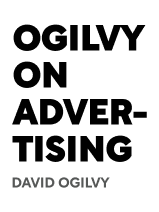

This article is an excerpt from the Shortform book guide to "Ogilvy On Advertising" by David Ogilvy. Shortform has the world's best summaries and analyses of books you should be reading.
Like this article? Sign up for a free trial here .
What does new product development in marketing entail? How does product research and development work in advertising?
Product development in marketing is a process where a group works to create a product and find the best marketing strategy for it. This process often requires years of research.
Read more about product development in marketing and how it works.
New Product Development in Marketing
After years of working as a salesman, copywriter, and adman, in 1949, David Ogilvy (1911-1999) started his own advertising agency. It became one of the most successful agencies in the world and in 1985, Ogilvy compiled his decades’ worth of experience into Ogilvy on Advertising.
Ogilvy covers product development in marketing a part of his advice about advertising.
Selling Products
The ultimate goal of advertising is to sell products, but in fact, the best way to sell products isn’t to advertise them effectively—it’s to supply good products. In this part, we’ll look at how to set up products for success using marketing and research. In the next part, we’ll look at how to use this research to create effective advertising.
There are three considerations when it comes to marketing:
Product Development Considerations
Product development in marketing starts with the product.
Consideration #1: Quality. Improving the quality of your products (especially food products) will increase sales.
Consideration #2: Novelty. 80% of new products aimed at consumers fail. This is generally for two reasons:
- They’re too outside-the-box. For example, when cold cereal first came out, it was too novel—people thought of cereal as a food that was hot.
- They’re too similar to what already exists. If a new product has no distinguishable benefit from what already exists (whether that’s quality, price, convenience, and so on), people won’t be interested.
Products that are different versions of something that consumers are already familiar with tend to do well, such as disposable diapers or diet soda.
Consideration #3: Product names. Products that have good names sell better, and there are three kinds of names, each with its own advantages and disadvantages:
- People’s names. These are hard to copy, are easy to remember, and imply that a person designed the product. For example, Ford and Veuve Clicquot are named after people.
- Invented names. Since these made-up words are unfamiliar, it takes a long time to build up sales appeal. For example, Kodak and Kotex are invented names.
- Explanatory names. These names describe what products are or do. They initially have sales appeal, but the disadvantage is that they’re too specific to be used for line extensions (creating new products under the same brand name). For example, Band-Aid is a descriptive name that only works for bandages. Dove, on the other hand, can be used for body soap, shampoos, dish soap, moisturizer, and so on.
Once you’ve chosen a name, do some further research on the following to determine the name’s effectiveness:
- Context. Names may not mean the same thing to consumers that you think they do, may be hard to pronounce, may be hard to remember, or may be similar to another name you’re not aware of.
- Packaging. If the name needs to be printed in large letters on the package, choose a short name.
- Meaning in other languages. If you’re going to use the same product name in all markets, make sure it doesn’t mean something offensive in a different language.
Audience Considerations
Another part of product development in marketing is the audience. Here are those considerations.
Consideration #1: Target audience. At the time of writing, it had become too expensive to aim brands at the public as a whole (for example, Tide is aimed at everyone) and easier to target more specific audiences (more and more cable channels were available). Even manufacturers with huge budgets started focusing on smaller audiences because it was more profitable.
Consideration #2: Top customers. A small percentage of customers is responsible for a large percentage of sales, so it pays to focus on these top customers. For example, 14% of gin drinkers drink 80% of gin.
Consideration #3: Consumer behavior. According to an advertising expert at the London Business School, consumers alternate buying four or five different brands of a particular product. To get a new product into a consumer’s repertory, the expert found that she needed to buy it within a year of its launch. Therefore, a successful launch is critical to sales.
The expert also discovered:
- People tend to buy things as a habit.
- Most brands have steady sales—people rarely add new brands to their repertory.
- People tend to ignore ads for things they aren’t already buying.
Therefore, you can increase your sales by convincing your current customers to buy your product more, even if you don’t get any new customers.
Sales Considerations
Last, there are product development in marketing considerations for sales.
Consideration #1: Prioritization. It’s better to spend your time and money on the products that do well, rather than trying to save the products that are flopping.
Consideration #2: Promotions. Promotions only temporarily increase sales, and they rarely change brand preference. They can also set a precedent for future pricing and promotions. They’re not inherently problematic, but there are often more effective ways (such as advertising) to increase sales.
Consideration #3: Pricing. People judge products by their price and think more expensive products are of better quality. Ogilvy has seen evidence that people would rather have better products they have to pay more for. (This was contrary to popular belief at the time of writing, when marketers were scared to set their prices higher than their competitors’ and often created inferior products to keep costs down.)
- For example, during a study on inflation, the French government cut cheeses in half and sold one half for 37 centimes and the other half for 56 centimes. The 56 centime ones sold faster, even though they were exactly the same as the 37 centimes ones.
Consideration #4: Sales meetings. When holding sales meetings, book small rooms so that people have to crowd in and stand. This makes your meeting look popular and successful. Additionally in meetings, use as little technology as possible, because it’s prone to failing.

———End of Preview———
Like what you just read? Read the rest of the world's best book summary and analysis of David Ogilvy's "Ogilvy On Advertising" at Shortform .
Here's what you'll find in our full Ogilvy On Advertising summary :
- What the "father of advertising" has learned from his decades' of experience
- How to craft easy-to-understand ads that work
- The 6 pioneers of the advertising industry






